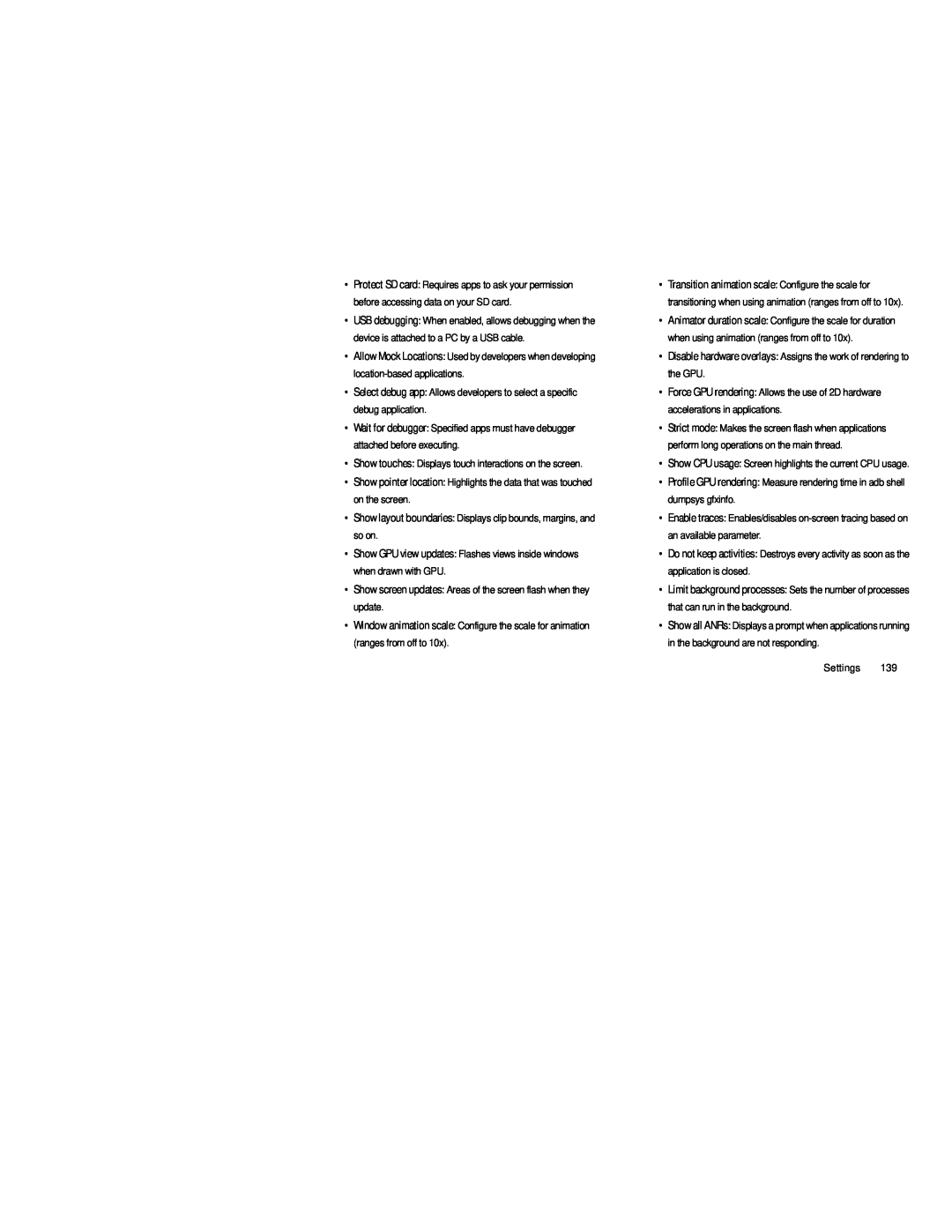•Protect SD card: Requires apps to ask your permission before accessing data on your SD card.
•USB debugging: When enabled, allows debugging when the device is attached to a PC by a USB cable.
•Allow Mock Locations: Used by developers when developing
•Select debug app: Allows developers to select a specific debug application.
•Wait for debugger: Specified apps must have debugger attached before executing.
•Show touches: Displays touch interactions on the screen.
•Show pointer location: Highlights the data that was touched on the screen.
•Show layout boundaries: Displays clip bounds, margins, and so on.
•Show GPU view updates: Flashes views inside windows when drawn with GPU.
•Show screen updates: Areas of the screen flash when they update.
•Window animation scale: Configure the scale for animation (ranges from off to 10x).
•Transition animation scale: Configure the scale for transitioning when using animation (ranges from off to 10x).
•Animator duration scale: Configure the scale for duration when using animation (ranges from off to 10x).
•Disable hardware overlays: Assigns the work of rendering to the GPU.
•Force GPU rendering: Allows the use of 2D hardware accelerations in applications.
•Strict mode: Makes the screen flash when applications perform long operations on the main thread.
•Show CPU usage: Screen highlights the current CPU usage.
•Profile GPU rendering: Measure rendering time in adb shell dumpsys gfxinfo.
•Enable traces: Enables/disables
•Do not keep activities: Destroys every activity as soon as the application is closed.
•Limit background processes: Sets the number of processes that can run in the background.
•Show all ANRs: Displays a prompt when applications running in the background are not responding.
Settings 139
